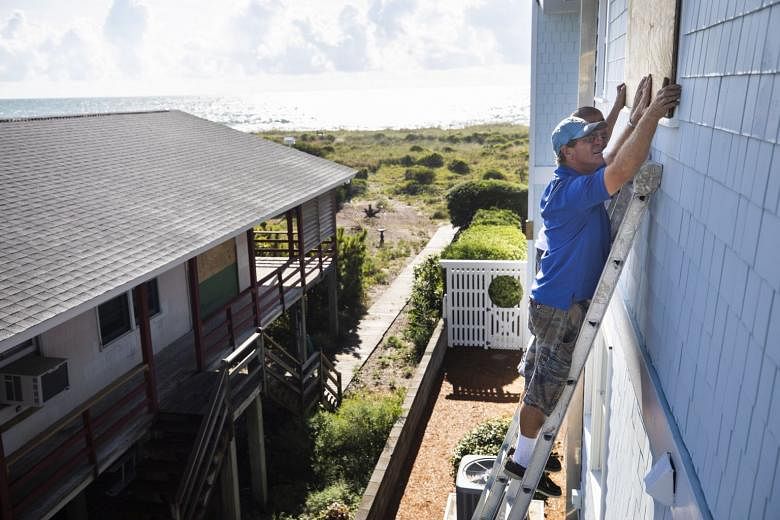NEW YORK (BLOOMBERG) - As Hurricane Florence barrels toward North Carolina, it's being strengthened and guided by a one-two punch of climate factors scientists have been tracking for years.
Florence, which threatens to be the most severe storm to hit North Carolina in more than 60 years, is being steered by a high-pressure ridge associated with unusually warm ocean temperatures. That's discouraging it from turning north or east, a shift that could spare coastal communities the storm's worst. On Wednesday, forecasters said it had shifted slightly south, and would rake the shoreline from Georgetown, South Carolina, to Wilmington, North Carolina.
Meanwhile, a weakened jet stream means that Florence is more likely to linger in the region, raising the spectre of devastating flooding from as much as 75cm of rain.
Two of the most destructive hurricanes in US history, Sandy in 2012 and Harvey last year, were influenced by similar forces, though neither by both, said Jennifer Francis, a research professor at New Jersey's Rutgers University. Florence has triggered more than 1 million evacuations and expectations of as much as US$27 billion (S$37 billion) in damages. It's likely to be the most intense storm to hit the region since Hurricane Hazel in 1954.
"Warming oceans, a more rapidly warming arctic, melting ice sheets are all contributing in various way to conditions like what we're observing now," Francis said. "It's favouring slow-moving weather patterns, more intense tropical storms and heavier downpours. And they're all more likely as we continue to warm the Earth."
As with the Florence trajectory, Sandy also failed to turn away from the coast. It caused US$70.2 billion in damages, when adjusted for inflation, making it the fourth-most-destructive storm in US history, according to the US National Hurricane Center.
A weakened jet stream means that should Florence strike land, it will be in no hurry to move on. Harvey, the second costliest US hurricane with US$125 billion in damages, sat over Houston for days, sucking up water from the Gulf of Mexico and dumping it over south Texas, according to Michael Mann, a distinguished professor of atmospheric science at Pennsylvania State University.
"It's fair to say that we may be seeing this play out again with Florence," Mann said.

